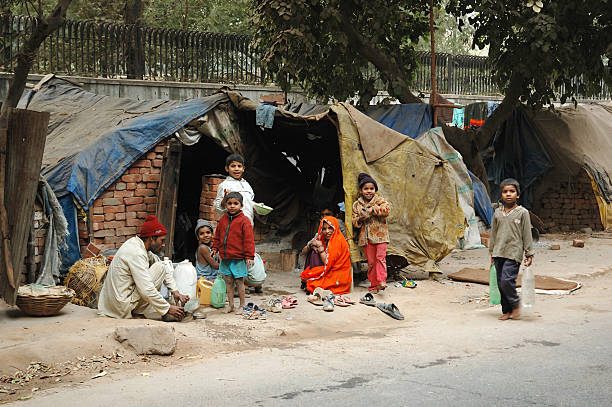Poverty itself is not a crime. It’s a socio-economic condition characterized by a lack of financial resources or material possessions to meet basic needs such as food, shelter, and clothing. Poverty can result from a variety of factors including unemployment, low wages, lack of education, systemic inequalities, and discrimination.
However, poverty can often be associated with criminal activities due to the desperation it can cause. People living in poverty may resort to illegal means such as theft, drug trafficking, or other forms of crime in order to survive or improve their circumstances. Additionally, poverty can be a contributing factor to issues such as homelessness, which may involve behaviors that are criminalized in some jurisdictions, such as loitering or panhandling.
Furthermore, poverty can intersect with other social issues such as access to education, healthcare, and opportunities for upward mobility. Lack of access to these resources can perpetuate cycles of poverty and inequality, leading to social unrest and potentially contributing to higher rates of crime in impoverished communities.
It’s important to address the root causes of poverty through policies and programs aimed at providing economic opportunities, social support, and access to essential services. By tackling poverty and its underlying factors, societies can work towards reducing crime rates and creating more equitable and just communities. Additionally, efforts to combat poverty should be coupled with initiatives to reform criminal justice systems and address systemic issues of inequality and discrimination that disproportionately affect marginalized populations.
Poverty is a multifaceted and complex socio-economic condition characterized by a lack of material resources necessary for a decent standard of living. It encompasses various dimensions beyond just income, including inadequate access to basic necessities such as food, clean water, sanitation, healthcare, education, housing, and employment opportunities. Understanding poverty requires delving into its causes, manifestations, and impacts on individuals, communities, and societies as a whole.
-
Causes of Poverty:
- Structural Factors:
These include systemic inequalities, such as unequal distribution of wealth and resources, discriminatory policies, and economic systems that favor certain groups over others. - Individual Circumstances:
Factors such as lack of education, skills, or access to employment opportunities, as well as personal circumstances like illness, disability, or family responsibilities, can contribute to poverty. - Environmental and Geographical Factors:
Natural disasters, environmental degradation, and geographic isolation can also exacerbate poverty by limiting livelihood options and access to resources. - Political Factors:
Corruption, political instability, conflict, and ineffective governance can hinder poverty reduction efforts and perpetuate cycles of poverty.
- Structural Factors:
-
Manifestations of Poverty
- Income Poverty:
This is the most commonly used measure of poverty, referring to a lack of sufficient income to meet basic needs. - Material Deprivation:
This includes inadequate access to food, clean water, sanitation, housing, healthcare, and education. - Social Exclusion:
Poverty can lead to social isolation, stigma, and exclusion from participation in society’s economic, social, and cultural activities. - Vulnerability:
Poverty often leaves individuals and communities vulnerable to economic shocks, health crises, natural disasters, and other emergencies.
- Income Poverty:
-
Impacts of Poverty:
- Health:
Poverty is associated with higher rates of malnutrition, infectious diseases, mental health issues, and shorter life expectancy. - Education:
Poverty can hinder access to education and limit educational attainment, perpetuating intergenerational cycles of poverty. - Economic Growth:
High levels of poverty can impede economic growth and development by limiting human capital formation, productivity, and consumer demand. - Social Cohesion:
Poverty can undermine social cohesion and stability by exacerbating inequalities, fostering resentment, and increasing social tensions.
- Health:
-
Addressing Poverty:
- Economic Policies:
Implementing policies that promote inclusive economic growth, create employment opportunities, and reduce income inequality. - Social Safety Nets:
Establishing social protection programs such as cash transfers, food assistance, and healthcare subsidies to support vulnerable populations. - Education and Skills Development:
Investing in education, vocational training, and skill-building programs to enhance human capital and improve employability. - Healthcare Access:
Ensuring universal access to healthcare services, including preventive care and treatment, to address health-related vulnerabilities associated with poverty. - Community Empowerment:
Engaging communities in participatory development initiatives that empower marginalized groups, promote social cohesion, and build resilience to poverty.
- Economic Policies:
In conclusion, poverty is a complex and multidimensional phenomenon with deep-rooted causes and far-reaching impacts. Effective poverty reduction strategies require a comprehensive approach that addresses structural inequalities, promotes economic opportunities, enhances social protection, and empowers individuals and communities to break the cycle of poverty and achieve sustainable development.
File size
